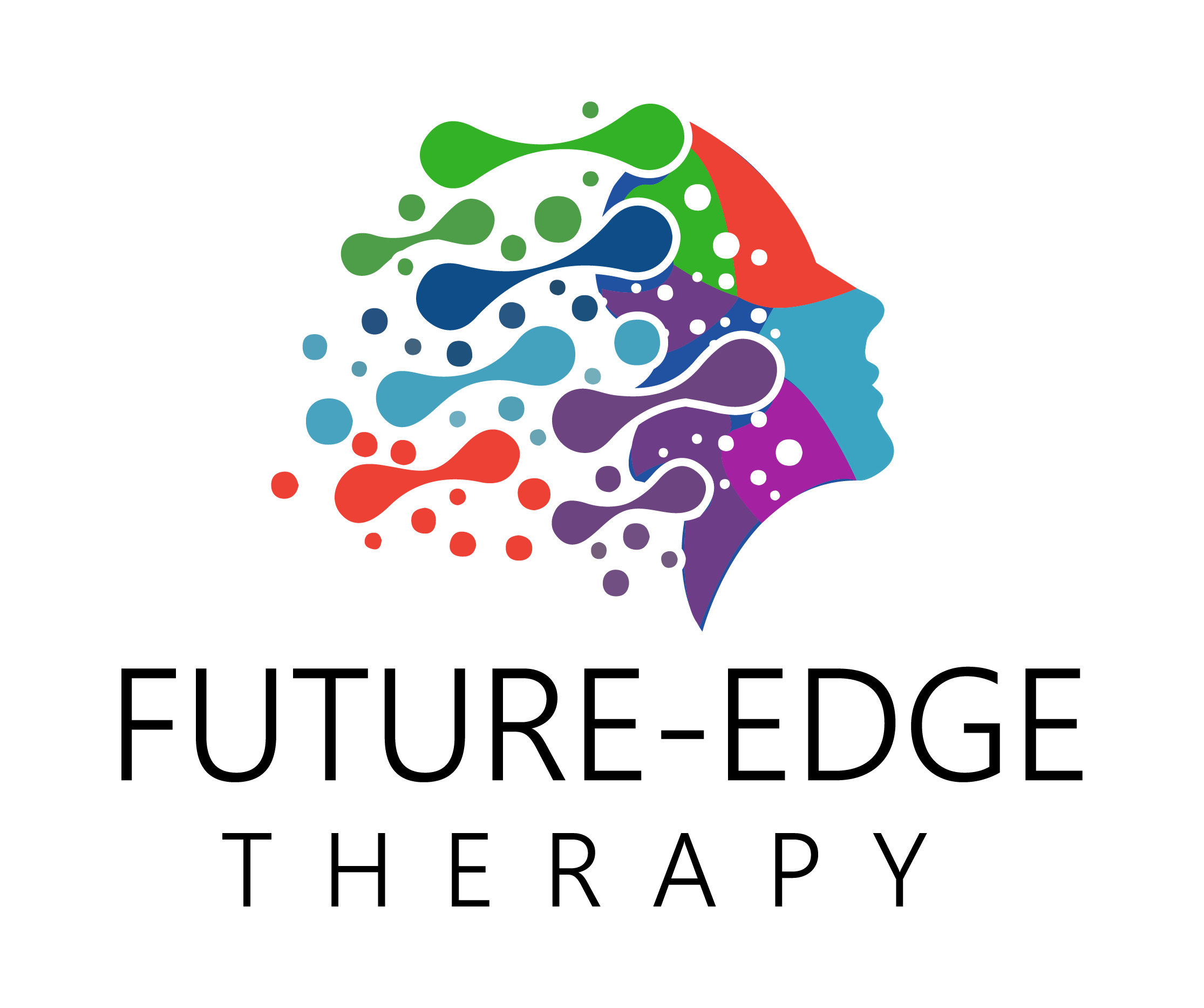
14 Nov What Is Emotional Release Therapy and How Does It Work?
When you hear the phrase “emotional release therapy”, it might sound a little daunting. In many ways it is about diving into deep feelings and processing them. However what really matters is how we go about it and why. At Future Edge Therapy, we’ve found that understanding the method, what it aims to achieve and how it differs from other therapies helps people decide whether it is right for them.
What exactly is “emotional release therapy”?
Emotional release therapy refers to a therapeutic approach where the focus is on identifying, experiencing and then releasing any emotions that have become stuck, suppressed or unexpressed. It is mainly focused on emotions such as anger, grief, fear and sadness which may not have been safely processed at the time they happened.
These types of emotions can sometimes linger in our bodies, creating tension, discomfort or even just a general sense of feeling “not quite right”. Unlike purely talking based therapy it often involves helping the client connect to bodily sensations, physical responses and energy flow.
In simple terms, emotional release therapy will invite you to safely bring up what you have been keeping inside, allow you to process these feelings and let it go so you can live freer without that emotional weight.
Why might someone consider emotional release therapy?
Here are some of the common reasons we see people looking for emotional release therapy:
- You’ve experienced trauma in the past which was either big or ‘small but persistent’ and you still regularly feel the impact on a day to day basis, this includes physical symptoms, anxiety, mood swings and irritability.
- You’ve noticed that you keep holding things or shut off emotionally to get through each day.
- You regularly experience tension in your body that does not respond to physical treatments such as massage or physiotherapy because the root of the cause is emotional.
How does emotional release therapy work in practice?
Here’s a step-by-step breakdown of how we typically work at Future Edge Therapy and how you can expect the process to unfold.
- Creating safe space & establishing trust
Before anything else, we build a safe and confidential environment. Emotional release therapy is by nature very sensitive and we want you to feel looked after and not judged in any way. Here at Future Edge Therapy we emphasise consent, pacing and respect for your personal boundaries. - Exploring the body-mind connection
Often what feels like ‘just in your head’ has a body component that is impacted such as tension, shallow breathing and stuck energy. We might ask you to try tuning into these sensations such as what you feel in your body when you think of a certain memory, emotion, or even natural movement.
This process helps reveal how the emotional and physical are interlinked. - Identifying and naming the emotion
We will help guide you through the process of identifying the feeling you are experiencing: is it grief, rage, shame, fear or something else? Often the simple act of naming and bringing awareness to what’s been hidden begins the shift.
We may also explore how long this feeling has been present, where it lives in your body, and what belief or memory accompanies it. - Allowing the release or expression
Here’s where the “release” part comes into play. This might involve:
– Letting the body move or tremble, letting tears come, letting a voice express something.
– Using breathwork, guided imagery or somatic (body-based) techniques.
– Bringing compassion to the part of you that’s hurt, disregarded, hurt by events.
At Future Edge Therapy we guide you gently, helping you stay grounded while you do the work. - Integration & making meaning
Once the emotion has surfaced and been expressed, we spend time helping you integrate the experience. That means exploring what this release means:
– What have you learned about yourself?
– Are there patterns you now see that you didn’t before?
– How will you carry yourself differently going forward?
This part is crucial for the “lasting change” rather than just a one-off relief. - Supporting on-going resilience
Emotional release therapy isn’t always a “quick fix”. At Future Edge Therapy, we recommend follow-up work such as journaling, movement/mind-body practices, check-in sessions. We want to help you build resilience, not just temporary relief.
What kind of results or benefits can you expect?
While outcomes vary (and individual responsibility, readiness and circumstance matter a lot), these are some commonly reported benefits:
- A lighter sense of being: less emotionally “weighted”. Many clients note that things feel less heavy after the release.
- Improved body awareness and reduced physical tension: since stuck emotions often contribute to bodily discomfort.
- Improved emotional regulation: once you’ve experienced that your emotions can pass through you safely, you gain more control and less fear around emotional upheaval.
- Greater clarity: about emotional triggers, belief systems, patterns that keep you stuck.
- Enhanced connection: to your own feelings, to your body, and (potentially) to others in healthier ways.
At Future Edge Therapy we emphasise that this isn’t about “erasing” emotions, instead it’s about freeing them so they don’t unconsciously shape your life.
Are there any risks or things to consider?
Yes and good therapy always acknowledges these. Here’s what to bear in mind:
- Because you’re dealing with strong emotions, there can be discomfort. If you have trauma history (especially complex trauma), working with a trained therapist is essential.
- Emotional release therapy is not a substitute for medical or psychiatric care when required.
- You may feel a short-term increase in intensity after a session (safe and normal) before things settle.
- As with any treatment, no guarantees. The therapy is co-created: your readiness, commitment and the therapist’s skill all matter.
At Future Edge Therapy we make sure you’re fully informed, and we work at your pace, not ours.
How does Future Edge Therapy approach emotional release therapy?
At Future Edge Therapy we bring together the following:
- Qualified practitioners with training in body-mind therapies, trauma-sensitive approaches and holistic methods.
- A person-centred approach: we tailor the session to you, your history, your readiness, your goals.
- A safe UK-based setting (or online option) where you’re welcomed without judgement.
- A clear structure: from initial consultation, through the release work, to integration and follow-up.
- Transparent communication: we’ll explain what emotional release therapy means in your context, what we expect, what you can expect.
In short: we aim to help you move from “I feel stuck” → “I’m aware of what’s stuck” → “I’m freeing what’s stuck” → “I’m living lighter”.
Who is emotional release therapy suitable for — and who might it not be right for?
Suitable for people who:
- Feel that traditional talk therapy hasn’t addressed the body or the deeper emotional aspect.
- Want to explore emotional patterns, not just symptoms.
- Are ready to engage in the work, not just passively talk.
- Are open to a holistic mind-body approach.
May not be right for people who:
- Are in crisis (e.g., suicidal, actively self-harming) without concurrent specialised care.
- Are unwilling or unable to connect with bodily sensations/emotions (e.g., due to certain diagnoses or personality issues).
- Expect a quick fix without their own engagement.
If you’re unsure whether this is for you, one of our exploratory sessions at Future Edge Therapy can help clarify.
Final thoughts
Emotional release therapy offers a compelling path for anyone who senses that “something deeper” is going on such as emotions unprocessed, held in the body, subtly shaping our decisions, our mood, our relationships. At Future Edge Therapy we believe that releasing these stuck parts doesn’t just relieve us, it can transform our experience of life.
If you’re searching for a therapy that honours not just your mind, but your body and your emotional world too, then emotional release therapy might be the right next step. And if you’d like to explore how we do it at Future Edge Therapy, do get in touch.
Remember: healing isn’t about perfection it’s about being whole, with what you’ve got, and freeing what you’ve been carrying.
 7 ways to combat anxiety - Free ebook
7 ways to combat anxiety - Free ebook

